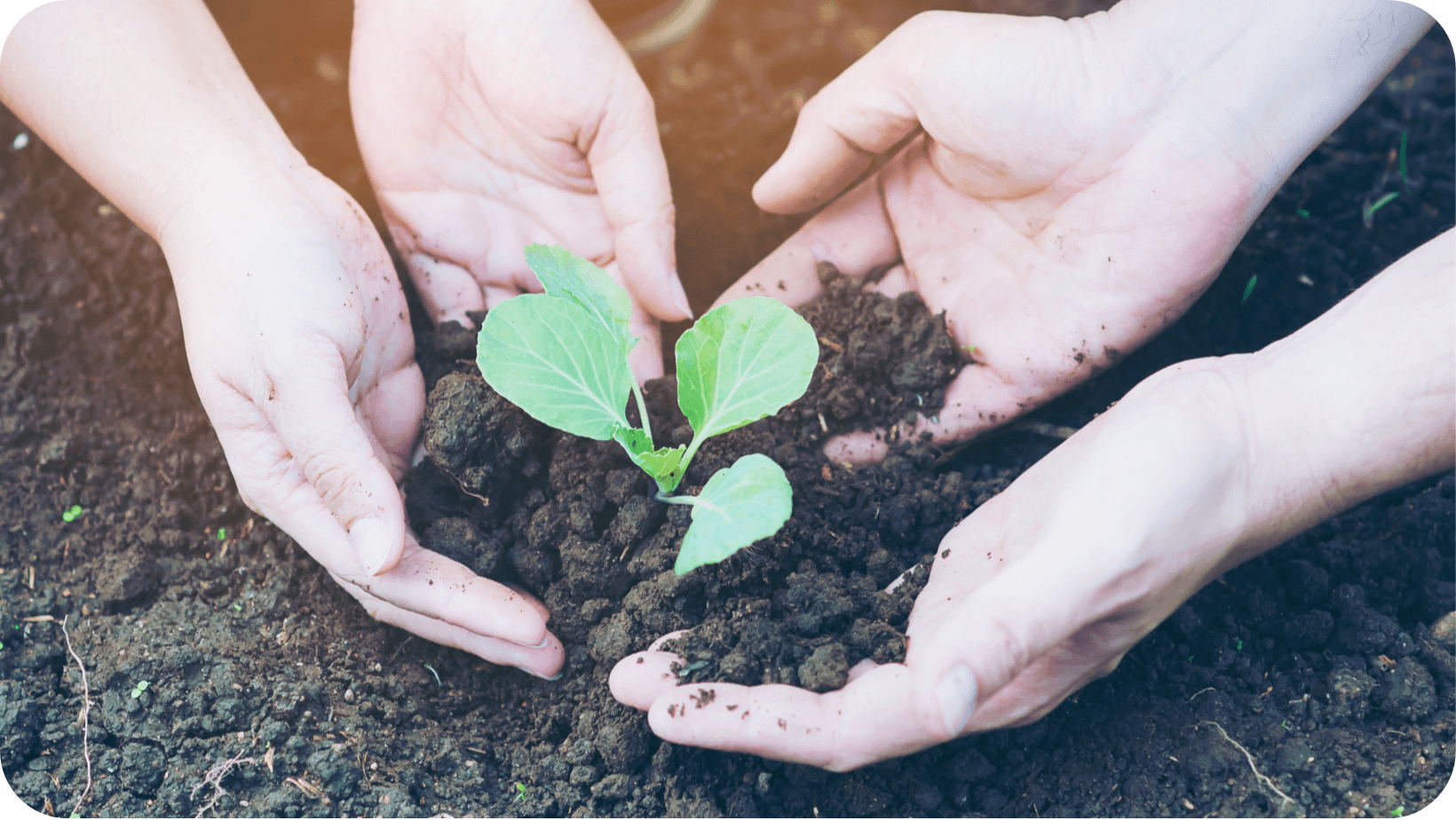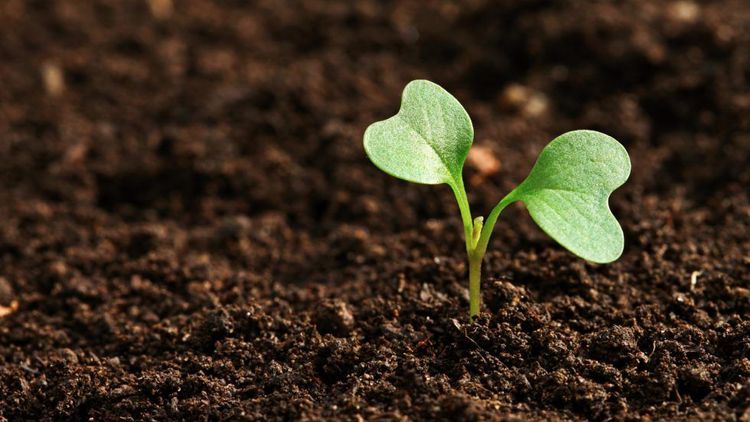Save the earth: The biodiversity crisis nobody is talking about
Earth. What springs to mind when that word is spoken? For many, it is our home; Planet Earth. We’d find ourselves in quite a predicament without this world spinning just the right distance from the sun. For others, perhaps it’s Mother Earth. In mythical form, she has had many names throughout the ages, Gaia, Terra, Tellus, Gaea, and Great Mother to name a few. Whilst these are perfect depictions of the word earth, for this article, we are focusing on the earth itself, the ground we walk upon, the soil, or in its more commonly known terminology; mud.
But, why are we talking to our readers about mud? Surely we have more pressing matters to write about? It came as rather a shock to us to learn that earth, mud, soil, or whichever terminology you prefer to call it, is presently one of the most urgent subjects that should be making headlines. Yet, as with so many critical climate change based topics, the biodiversity crisis is getting barely any media coverage at all.
Put simply; the earth is dying.
Not the planet Earth (phew), this beautiful orb that blessed each and every one of us with life, will continue to turn, evolve and adapt for aeons to come. Whether our species continues to inhabit Earth is another question entirely, and one of the most vital life sources that we need to survive the ever worrying new world that climate change is creating, is the earth we walk upon, and it is in trouble. Big trouble. Because of us.
The many activities of day-to-day human life have affected the ground we took for granted in so many ways, that in multiple places throughout the planet, biodiversity within the soil is declining at an alarming rate. Soil that was once rich and fertile with nutrients, insects and microscopic organisms is now struggling to survive. But, why should we care that in some places the ground has deteriorated to dirt?
From an ethical standpoint, the soil is home to an endless array of life forms with as much right to inhabit the earth as us, and from a self-preservatory perspective; soil can nurture and grow food, dirt cannot. If too much of our beloved earth turns to dirt, crop failures will become a regular occurrence and food shortages will be frequent, affecting people across the globe with potentially – and highly probable – disastrous effects. So, what has created this alarming cause of events and how do we turn it around?
The main culprit is the way in which our species cultivates the land for crops. We have a rather self-destructive knack of taking from the earth, and forgetting to give back. Soil degradation is continuing rapidly from overwhelming mass agriculture, industrialisation, improper land use, and the increase of pesticide use. All of this combined has had an astronomically detrimental effect both above and below the ground, resulting in a decline in soil fertility, adverse changes to the soil’s composition from excessively increased or decreased alkalinity, acidity and/or salinity, and overall deterioration of the earth’s structural condition.
The long term effects of excessive soil degradation will not only impact our home planet and the creatures that live upon it, but vastly affect our human way of life and the foods we depend upon to survive, both non-vegan, and vegan, if we don’t act now to try to save it. Renowned and much-loved yogi Sadghuru is trying his best to highlight the threat of soil degradation, and on March 21st he set off on a one hundred day motorbike journey as part of the #SaveSoil campaign, which is calling on policy makers to make soil regeneration a priority.
Whilst saving the earth may seem like a daunting feat, the good news is, as with the majority of climate change concerns, the solutions to solve the problems are widely available, and in some instances, already being put into place. The main issue is that if we want our planet to continue to provide us with fertile soil to grow food, we need more people on board, and quickly. From individuals, to businesses and major corporations, we need people to be aware of the biodiversity crisis, so that we can come together and try to fix it.

Srinrat/Canva Pro
We caught up with Rob Percival, author of The Meat Paradox and Head of Food Policy at the Soil Association to get the inside information on how we can help turn the crisis around, and join forces to save the earth.
V-Land (V-L): Hi Rob, thanks for chatting with us today, can you give our readers a little background info on your role and expertise on this subject?
Rob Percival (RP): I’d be happy to, my role is Head of Food Policy at the Soil Association, which is an environmental charity and I lead the organisation’s advocacy and campaigns focusing on sustainable organic farming and diets.
I’m also the author of The Meat Paradox, which looks at the psychological complexities of the ‘meat debate’ exploring how the debate became polarised, particularly within the media where it is portrayed as ‘farmers vs vegans’, and the contradictions within our dietary choices and our relationship with animals, by putting them in a social and evolutionary context.
V-L: What were your inspirations to write The Meat Paradox?
RP: As someone who’s closely involved within the politics of meat, I witness a lot of emotions behind both sides of the debate and the contradictions that are becoming more apparent within society, for example; we claim to be a nation of animal lovers yet it’s intensively farmed animals that make up the bulk of our diet. People in the UK say they’re eating less meat but when you look at the overall consumption data, we haven’t seen a meaningful shift away from animal-based products. There seems to be some kind of split between what we say and what we do, what we value, and how we live. It’s broadly accepted that the way we eat needs to change, and a great deal needs to change in the next decade to avert the worst scenarios of the climate crisis from becoming a reality. I was keen to look at this through a psychological lens, which is what The Meat Paradox tries to do.
V-L: We think it’s great that you’re approaching the subject from both perspectives and are looking forward to reviewing The Meat Paradox later this year, which ties in directly with many agricultural caused climate concerns. When it comes to the soil crisis, just how bad is it?
RP: It’s bad. We have a lot of work to do in the next decade and we’re not on track. We have a food system that for the past fifty years has taken more out from the land than we give back. This overly extractive system has led us to a crisis point where we have taken so much out, that the ecosystems that support our lives are showing significant signs of strain. The soil, which should be a living medium made up of not only organic and mineral matter but also teaming with microbes, fungi and complex forms of microscopic animal life, is dying. We’re killing the soil through excessive use of synthetic fertilisers, pesticides and intensive farming. Insect numbers are rapidly declining, we’ve torn up many wild habitats to create fields that are more agricultural efficient, and we have a real challenge because we need to turn all of this around within the next decade.
V-L: What solutions are available to avert soil deterioration and help restore the earth?
RP: Thankfully, the solutions are available, we know how to fix this, we just need to get on and do it. Regenerative and organic farming that does the opposite of the current extractive system is the way forward; we need to put in more than we take out. Implement farming methods that don’t rely on pesticide and synthetic fertilisers, and instead nurture a more complex, agro ecosystem. The model for this is well established, and there’s a rising recognition amongst the farming sector and policy makers that this is the direction we need to go in.
V-L: What would you say the biggest challenges are, and why?
RP: We need the right government and trade policies in place to make this happen, and we need retailers to be behind the move to a more environmentally friendly way of growing our food. There’s a real buzz around the word ‘regenerative’ which is loosely defined and leaves it open to greenwashing, so this needs to be redefined. With recent events we’ve seen a cost of living crisis, spikes in fuel and gas prices which has greatly affected the farming community, for example; this has increased the price of synthetic fertilisers and the crisis in Ukraine has hit wheat prices. There’s clear evidence that the current mode of production has vulnerabilities, which gives greater evidence that the shift towards regenerative farming is beneficial. Farmers that already farm in this way are less exposed to global gas prices and future geopolitical shocks. There’s a real case for food system resilience for moving in this direction.
V-L: How can consumers support this transition to an eco-friendly approach to farming going forward?
RP: The three most impactful ways to help are to cut out intensively farmed meat and produce, buy organic where you can, and try to minimise food waste by only buying what you need. Those are three really important actions that everyone can take. If you have a garden or outdoor space, become ‘bug-friendly’ and eliminate the use of any sprays or pest controls and avoid purchasing any peat-based compost as this is really bad for the climate. Look after your outdoor space and make it good for bugs by allowing wildlife to grow. There are also some community supported agriculture projects that people might want to get involved with, The Sustainable Food Places Network is a great place to see what’s going on in your local area.
V-L: What positive shifts have you seen in society that gives hope for the future of our beloved earth?
RP: On an individual level, there’s been a rise in flexitarian, vegetarian and vegan diets, and whilst there hasn’t yet been a clear dietary shift, people are starting to see that our food choices are genuinely important – particularly in regards to meat consumption. Although we still have work to go to achieve that dietary change as a society, that’s really promising, and brands and businesses are responding to that. We work with a lot of restaurants for example who are now introducing more meat-free options to their menus, and among farmers there seems to be a real genuine buzz around regenerative farming that wasn’t there ten years ago, and recognition that systems need to change – there are lots of reasons to be positive.
Thanks for sharing your thoughts with us, we couldn’t agree more. There is hope for humanity – tonnes of it – with more people transitioning to a vegan way of life, and inspiring stories being shared daily, of how people are doing their bit to try and save the earth.
For more ways to help the earth from home, join the V-Land team and commit to Plant Life’s No Mow May pledge and check out last week’s feature on our top five ways to help save the bees. We also highly recommend Dave Goulston’s Silent Earth for a unique and compelling read and a deeper insight into insect life on the planet earth, and endorsing the Plant Based Treaty, a landmark international treaty to put food systems at the heart of combating the climate crisis.
Do you have an idea to help our planet? We’d love to hear from you! Share your thoughts with us on Instagram or Twitter.
